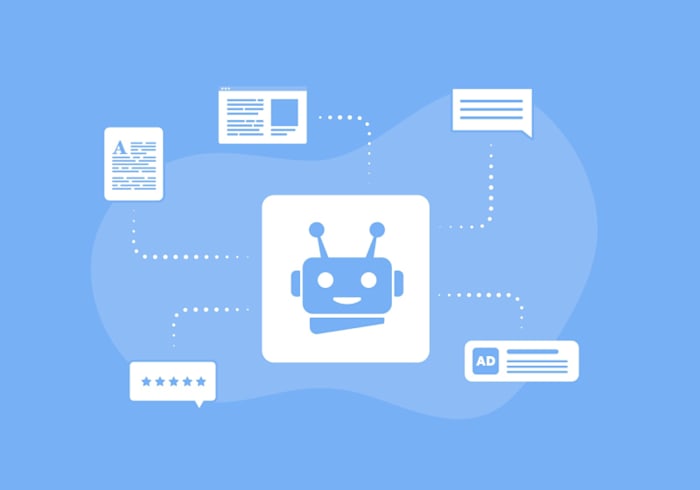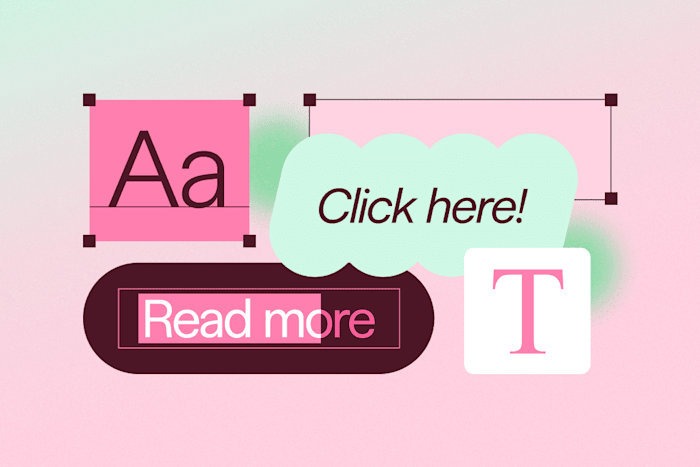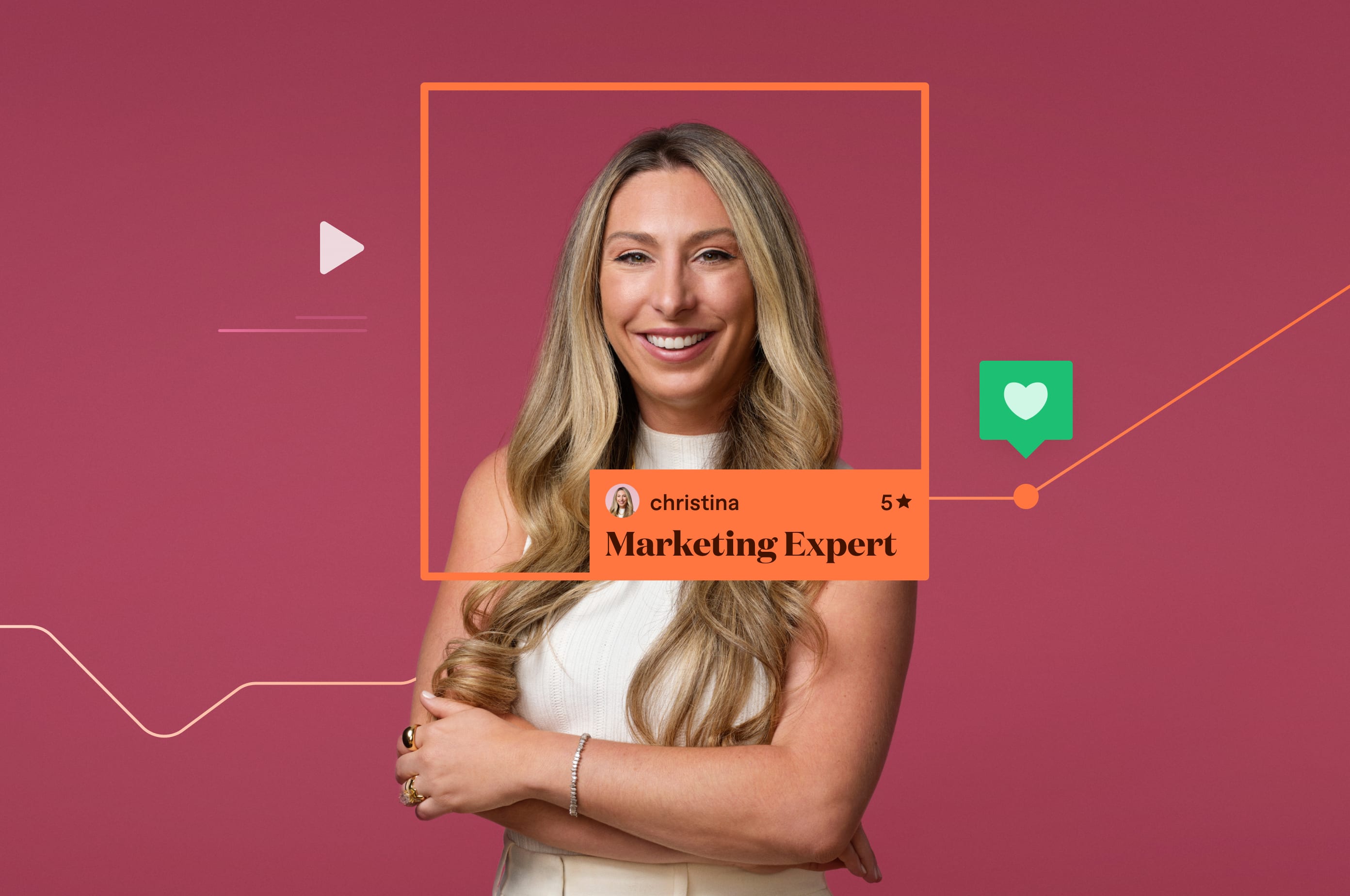Marketing vs. Advertising: Understanding the Key Differences
Learn the essential differences between marketing and advertising to make smarter campaign decisions.
 May 23, 2025
May 23, 2025 8 minute reading
8 minute reading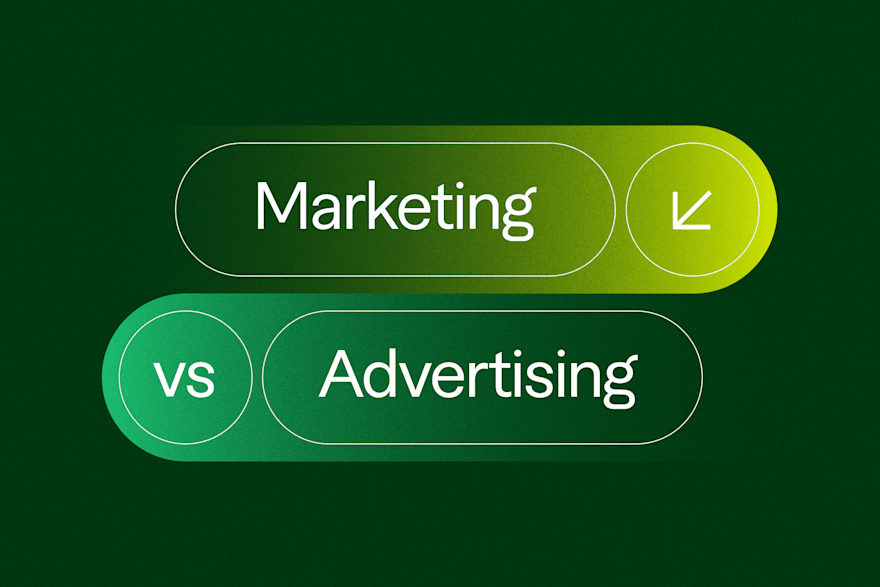
You’ve recently started a business and are officially ready to share it with the world. But what’s the next step? How do you actually get people to learn about your business and turn them into loyal customers?
You may have heard of digital marketing and advertising, but what’s the difference? And which one should you focus on?
In this article, we’ll cover the differences, share examples, and give tips on how you can get started with a successful strategy to promote your business.
What is marketing?
Marketing is the broad strategy of promoting a product, service, or brand. It includes everything from market research and product development to branding, content creation, and customer relationship management. It encompasses the entire customer journey, from awareness to advocacy.
At its core, marketing is about building relationships and connecting with customers meaningfully. It involves a mix of smaller strategies, including advertising, social media, SEO, email campaigns, and customer engagement—all designed to attract, retain, and grow a customer base.
To understand marketing as a concept, let’s use an example. You’ve launched a direct-to-consumer (DTC) skincare brand that sells clean, sustainable moisturizers. Here’s how your marketing strategy may play out for your skincare brand:
Branding & positioning: You define your brand as a premium yet affordable skincare line focused on sustainability. Your packaging, website design, and messaging all reflect this identity.
Content marketing: You create blog posts, TikToks, and Instagram Reels about skincare routines, ingredient benefits, and sustainability tips.
SEO & social media: You optimize your website for terms like “best clean moisturizer,” so people find you when searching online. You also build a loyal community on Instagram and TikTok.
Email & SMS marketing: You send personalized skincare tips, exclusive discounts, and product recommendations based on customer preferences.
Customer engagement & loyalty: You encourage reviews, feature user-generated content, and offer a rewards program to turn one-time buyers into repeat customers.
All of these smaller, strategic pieces work together to build awareness, drive sales, and build long-term customer relationships. That’s marketing in action.
What is advertising?
Advertising is a subset of marketing. It involves creating and placing paid messages to promote a product or service. Advertising includes TV, social media, Google Ads, billboards, and more. The goal of an advertising campaign is to drive awareness, engagement, and sales through direct promotional efforts.
The easy way to remember the difference between marketing and advertising is to apply the old “all squares are rectangles, but not all rectangles are squares” logic. In other words, “all advertising is marketing, but not all marketing is advertising.”
Let’s look at an example of a real advertising campaign for the natural men’s deodorant brand, Mando.
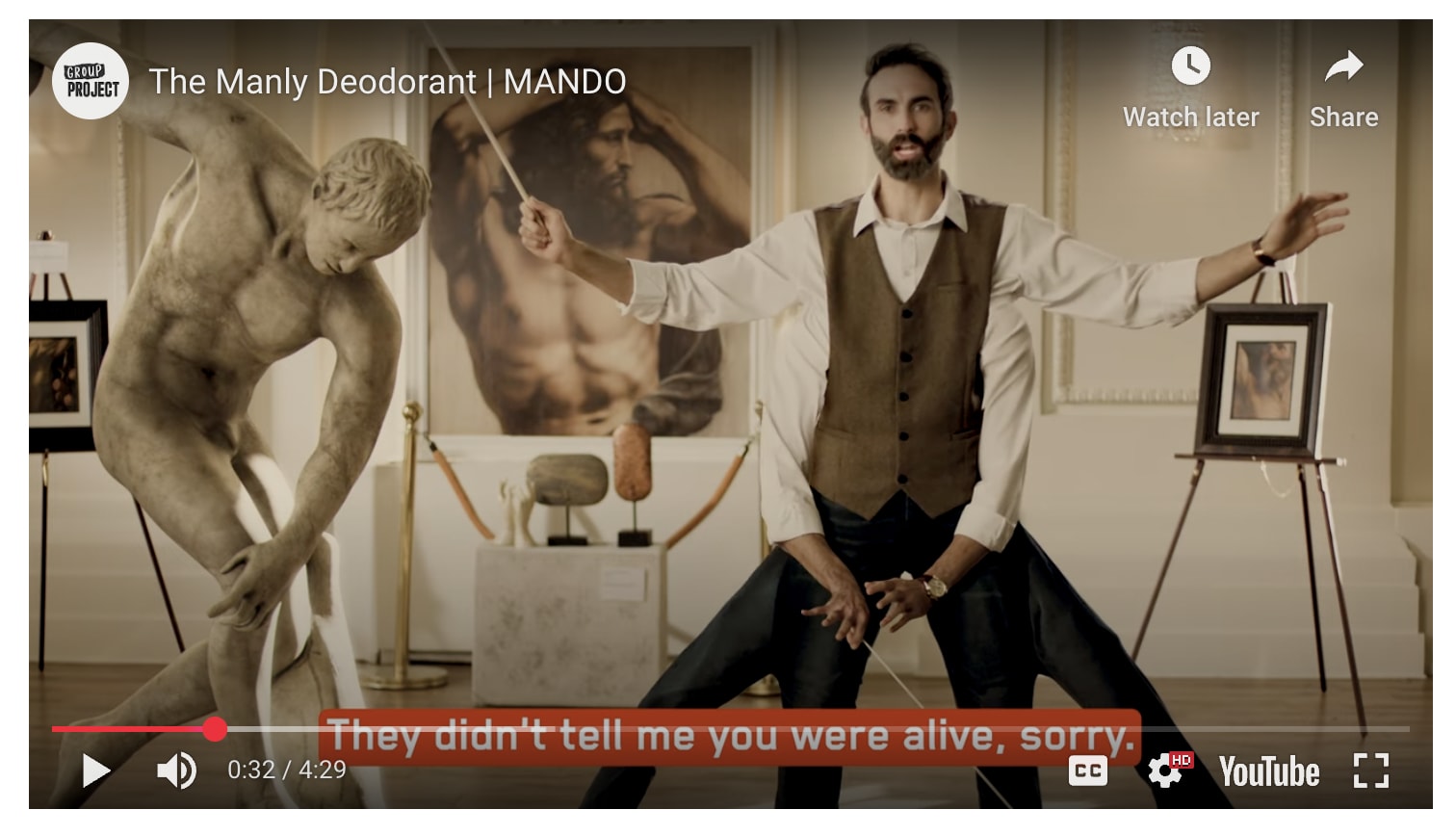
Group Project
This particular video advertisement (which runs on YouTube and Facebook) makes up one part of Mando’s overall marketing strategy. This ad uses great storytelling, lots of humor, and user-generated content (reviews) to connect with customers to sell deodorant.
Marketing vs advertising: Key differences
Marketing and advertising are often used interchangeably, but they serve distinct functions in a business strategy. While both aim to attract and retain customers, their scope, execution, and impact differ significantly. Here’s how they compare:
Scope and purpose
Marketing focuses on the entire customer experience. It includes branding, market research, pricing strategies, product placement, and customer engagement. A strong marketing strategy is all about keeping a business relevant and competitive over time. For example, Apple has been building its brand for years through various marketing efforts that span product design, retail store experience, and brand messaging.
Find an email marketing specialist for hire
Advertising is a paid effort that promotes a specific message, product, or service. It’s designed to grab attention and encourage immediate action. For example, when Nike launches a new sneaker, they use advertising, including display advertising, TV commercials, Instagram ads, and YouTube sponsorships—to drive sales.
Strategy versus tactics
A marketing strategy sets the vision and long-term goals for a brand. It shapes messaging, defines target audiences, and determines the best channels to build connections with customers. For example, Coca-Cola’s marketing focuses on storytelling and emotional branding, positioning itself as a symbol of happiness, nostalgia, and togetherness. This strategy keeps the brand relevant across countries and even generations. No matter where you go in the world, you can recognize a can of Coke—even if the writing is in English, Thai, or Chinese. That’s the result of a cohesive marketing strategy.

World of Coke
Advertising is a tactic used to execute part of a marketing strategy. It delivers targeted messages through paid placements like digital ads, TV commercials, and billboards. Coca-Cola’s holiday campaigns, featuring Santa Claus and the iconic red trucks, are a prime example—short-term ads designed to reinforce the brand’s image while driving seasonal sales.
Timeframe and duration
Marketing is a long-term effort that evolves with customer needs and market trends. Companies like Tesla maintain a strong marketing presence through product innovation, brand advocacy, and customer engagement—even without traditional advertising.
Advertising campaigns, on the other hand, have set timeframes. A summer clearance sale may run for two weeks, with targeted ads on Instagram and Google driving traffic to the website. Once the sale ends, the ads stop, but marketing efforts continue.
Customer journey focus
Marketing supports every stage of the customer journey—from awareness to purchase and beyond. It builds relationships through consistent messaging, personalized experiences, and valuable interactions. Spotify, for example, nurtures its users with ongoing engagement efforts like personalized playlists, algorithm-driven recommendations, Wrapped lists, and other exclusive content.
Advertising typically focuses on the early stages of the journey. It aims to generate awareness and drive conversions. For example, a new restaurant might run paid ads on Yelp and Google to attract first-time visitors but rely on marketing efforts like loyalty programs to keep them coming back.
Measurement and metrics
Marketing success is measured through long-term growth and customer relationships. Companies track various metrics to assess effectiveness, including:
Brand awareness: How well people recognize and recall the brand.
Customer retention: The percentage of customers who continue using a product or service over time.
Website traffic: The number of visitors coming to a website, often from organic search, social media, or referrals.
Email engagement: Open rates, click-through rates, and interactions with email campaigns.
Customer lifetime value (CLV): The total revenue a business can expect from a single customer over their relationship with the brand.
Advertising metrics focus on short-term performance and direct impact. Common measurements include:
Impressions: The number of times an ad is displayed, whether clicked or not.
Click-through rate (CTR): The percentage of people who click on an ad after seeing it.
Conversions: The number of users who take a desired action, such as making a purchase or signing up for a service.
Return on ad spend (ROAS): Revenue generated from an ad campaign compared to the amount spent.
Content and communication style
Marketing content educates, engages, and builds trust. It includes blogs, newsletters, podcasts, and case studies. For example, Patagonia markets its brand through sustainability storytelling, showcasing its environmental initiatives rather than just selling jackets.
Advertising content is direct and action-driven. It uses compelling visuals, catchy slogans, and strong calls to action. A Coca-Cola Super Bowl ad isn’t about long-term education. It’s about creating a memorable moment that makes people want to grab a Coke right away.
Budget allocation
Marketing budgets cover a wide range of activities that contribute to brand growth and customer engagement. These can include:
Content creation: Blogs, videos, podcasts, and other materials that educate and engage audiences.
Social media management: Organic social media efforts, including community engagement and brand storytelling.
SEO (Search Engine Optimization): Strategies to improve search rankings and increase website visibility.
Public relations (PR): Media outreach, press releases, and reputation management.
Customer experience initiatives: Loyalty programs, personalized emails, and interactive campaigns.
Advertising budgets focus specifically on paid promotions. This includes:
Digital ads: Google Ads, Facebook Ads, and other pay-per-click (PPC) campaigns.
Paid social media ads: Paid ads on social media sites.
Traditional media buys: TV, radio, and print advertising.
Influencer partnerships: Paid collaborations with social media personalities or industry leaders.
Sponsored content: Paid placements in blogs, news sites, or social media posts.
When to use marketing
Marketing is essential for businesses that want to build a lasting connection with their audience. It shapes how consumers perceive a brand, attracts potential customers, and nurtures relationships over time. Companies should focus on marketing when they need to:
Establish brand awareness: A strong marketing strategy introduces a brand to the market and communicates its value. This is especially important for new businesses or companies expanding into new regions.
Build customer trust and loyalty: Marketing efforts like content creation, email campaigns, and community engagement help businesses stay relevant and deepen customer relationships.
Educate potential customers: Content marketing, social media, and SEO-driven blog posts inform consumers about products, services, or industry trends. This helps guide them through the decision-making process.
Generate long-term demand: Unlike short-term advertising campaigns, marketing strategies sustain interest and attract new customers over time.
Support every stage of the customer journey: Marketing includes retention strategies like loyalty programs, personalized recommendations, and post-purchase communication to encourage repeat business.
When to use advertising
Advertising is most effective when a business needs to reach a specific audience quickly and drive immediate action. Companies should use advertising when they need to:
Increase brand awareness quickly: Paid ads help businesses get in front of new audiences fast, whether through social media, search engine marketing, or traditional media.
Promote a new product or service: Advertising is useful for launching something new, helping it gain visibility in a crowded market.
Drive immediate sales or conversions: Businesses running special promotions, seasonal sales, or limited-time offers benefit from ads that create urgency.
Target a specific audience segment: Digital advertising allows businesses to reach potential customers based on demographics, interests, and online behavior.
Stay competitive in high-traffic spaces: Brands in crowded industries often use advertising to maintain visibility, especially when competitors are running aggressive campaigns.
Hire marketing and advertising pros on Fiverr
Marketing and advertising are both essential in building your brand, connecting with customers, and boosting loyalty.
And, when you’re ready to start selling products or offering your services, you’ll need a strong marketing strategy and ad campaigns to support that strategy.
If this all sounds overwhelming, don’t worry. There are plenty of professionals on Fiverr that you can hire to help you with anything, including social media marketing, email marketing, online video advertising, and more. Get started with Fiverr today!
Find a search engine marketing (SEM) specialist for hire
Marketing vs. advertising FAQ
How is marketing different from advertising?
Marketing is a broad strategy that includes everything a business does to attract customers and promote a business. It covers market research, branding, pricing, distribution, and customer engagement. Advertising is a specific part of marketing focused on paid promotions. It uses channels like TV, digital ads, and billboards to get a message in front of potential customers.
Is marketing just another word for advertising?
No, marketing and advertising are not the same. Marketing is the overall approach to building brand awareness and customer relationships, while advertising is one method used within that strategy. Advertising is typically short-term and paid, while marketing includes long-term efforts like content creation, social media, and customer loyalty programs.
What is an example of marketing and advertising?
Marketing includes everything from branding and product positioning to customer outreach. A company like Coca-Cola builds its brand through sponsorships, social media campaigns, and in-store promotions. Advertising is a smaller piece of that strategy, such as running a holiday commercial, placing a digital ad on YouTube, or buying a billboard in Times Square.
What is the difference between content marketing and advertising?
Content marketing focuses on providing valuable, informative, or entertaining material to attract and engage customers. This includes blog posts, videos, and newsletters that help build trust and long-term relationships. Advertising is paid promotion designed to drive immediate action, such as an Instagram ad or a sponsored post. While content marketing nurtures an audience over time, advertising delivers a direct message to prompt a quick response.
